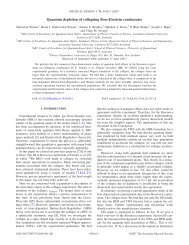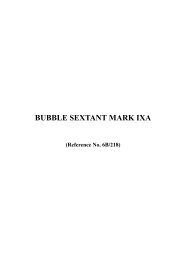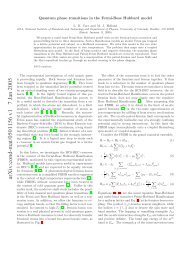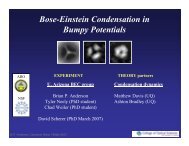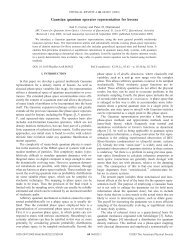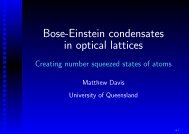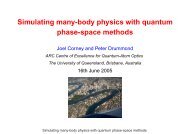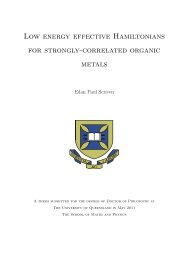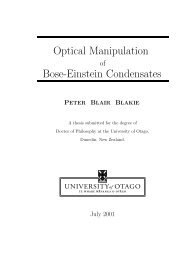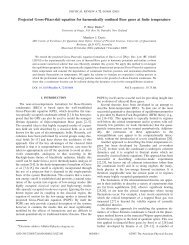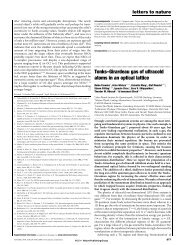Open Quantum Dynamics of Mesoscopic Bose-Einstein ... - Physics
Open Quantum Dynamics of Mesoscopic Bose-Einstein ... - Physics
Open Quantum Dynamics of Mesoscopic Bose-Einstein ... - Physics
Create successful ePaper yourself
Turn your PDF publications into a flip-book with our unique Google optimized e-Paper software.
7. <strong>Quantum</strong> simulations <strong>of</strong> evaporatively cooled <strong>Bose</strong> condensatesto the next, thus increasing the sampling error in the calculations <strong>of</strong> the moments. Thenumerical algorithm may still converge, although the rapidly changing fields at long timesdo preclude fast simulations.The underlying problem here is with the phase-space representation. Highly nonclassicalstates are not well represented by the coherent states by which the positive-P expansionis defined: <strong>of</strong>f-diagonal elements, where ψ 1 differs from ψ 2 , become large and the state canno longer be mapped onto a compact region <strong>of</strong> phase space. In fact, for longer times thedistribution may not vanish at the phase-space boundaries, leading to a breakdown <strong>of</strong> thepositive-P method. Other basis states may be used for the expansion, but the resultingphase-space equations will not be so simple as Eq. (7.4), if they exist at all. The upshot isthat for the positive-P technique to give a tractable numerical problem, relatively weaklyinteracting atoms must be considered, with scattering lengths much less than the usual s-wave scattering lengths for the alkali-metal atoms. A consequence <strong>of</strong> the weak nonlinearityis that, as revealed in the simulations, the dominant mechanism <strong>of</strong> condensate growth isspontaneous emission into the ground state, rather than the stimulated emission as foundin other studies[63].7.5 Numerical resultsFor the small-trap parameters used in the simulations, the effect <strong>of</strong> the stochastic termson the dynamics is very large. In fact the quantum fluctuations that these stochasticterms introduce are much larger than the initial thermal fluctuations, such that the initialfeatures <strong>of</strong> the distribution do not persist. This means that the choice <strong>of</strong> the initial state<strong>of</strong> the system is not critical, and also that in order to determine properties <strong>of</strong> the finalquantum ground state <strong>of</strong> the system, the stochastic terms are vital. To illustrate this, wecan remove the quantum noise terms, so that the simulations are <strong>of</strong> the GP equation, withinitial conditions corresponding to a thermal state. For our parameters, these simulationsdid not show strong <strong>Bose</strong> condensation effects, in contrast to the fully quantum-mechanicalsimulations. This demonstrates the highly nonclassical nature <strong>of</strong> the early stages <strong>of</strong> <strong>Bose</strong>condensation, in which spontaneous transitions to the lowest energy states clearly play animportant role.For the simulations shown in the figures, a 0 =0.6nm and the mass, corresponding153



